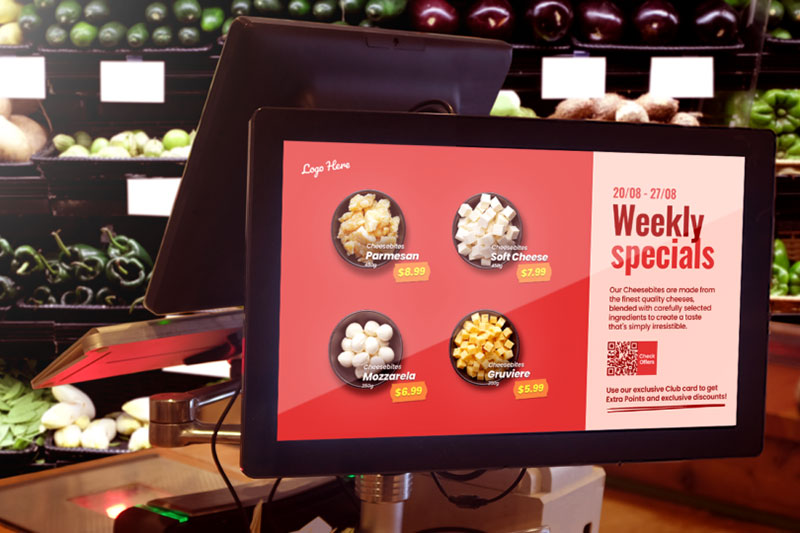Retailers that are looking for new and creative ways to engage their customers can look at the point-of-sale displays they use. Also known as point-of-sale materials (POSM), they are a great way to engage with different shopper types. On that note, not all displays are created equal; some have more impact than others do on different types of shoppers.
Here are five types of shoppers and what types of displays would get a better response from each of them:
1. The Deal Chaser
Shoppers who chase deals don’t necessarily go for the cheapest item they can find. It’s about scoring the purchase with the best overall deal. Are they getting the maximum value out of what they’re paying for?
This would frequently imply that they would spend more overall in order to get the best price per item. Examples include deals like Buy 2 Free 1, discounts on bulk purchases and minimum spending to access highly attractive exclusive deals.
Good bargain hunts can involve loyalty programs (Source: Pinterest)
Recommended POSM: Displays such as shelf talkers or aisle invaders, which deal-chasing shoppers can take their time to read, so that they can understand how to get a bargain. Visually emphasize the main attractive points of the deal, along with concise, relevant info.
2. The Researcher
Shoppers who like to deliberate before making purchases typically do their research even before stepping into the store. At times, they aren’t able to find out all they want to know on their own, so they step into the store to get more info before they commit to any purchase decision.
Although they may sometimes give in to emotional purchases, they usually only commit after doing enough research. Retailers would do well to win them over by presenting key product information in meaningful ways that also appeal to their sensibilities.
Sephora lets shoppers find out what product best suits their needs (Source: Compliant IA)
Clear categories and info to help shoppers compare product types (Source: Compliant IA)
Recommended POSM: Unlike traditional infomercials, digital displays demonstrate how products work or what makes them unique in engaging and creative ways. Free-standing displays and posters that present key info that helps shoppers compare and understand unique selling points also work well.
3. The Impulse Spender
Instant gratification is a primary pursuit of the impulse spending shopper. Purchases are typically driven by whims and emotions, so they try to avoid inconveniences during the purchasing process.
Retailers who want to encourage impulse purchases will clear off obstacles that would deter shoppers from buying them on the spot. If there is a discount, it is clear, hassle-free, and poses no dilemma for shoppers. It’s so affordable and easy to buy—might as well just throw it into the cart.
Convenience first with quick and easy deals (Source: Pinterest)
Emphasize savings without any catch or hassle (Source: H&H Group)
Recommended POSM: Shelf talkers and free-standing displays at or near checkout counters, which allow shoppers to quickly grab the product. Visuals and copies of the POSM appeal emotionally or with cheap pricing without much (or any) descriptive info, so that shoppers don’t have to think too much.
4. The Window Shopper
For some shoppers, retail therapy doesn’t necessarily mean spending money. Sometimes the shopping experience is enough, as they just want to browse and see what’s out there. Retailers have the opportunity to make their brand memorable to window shoppers, even if it doesn’t mean converting them to buyers on the spot.
New display technologies have become an effective means of creating captivating retail experiences. Retailers that are willing to splash the cash can take advantage of them to great effect.
Interactive in-person product customization from Nike (Source: Hypebeast)
Recommended POSM: Nike made headlines when it showcased the use of projection mapping technology to create a brilliant wall display and let shoppers customize the color combo of its classic sneakers. Other tech-forward options for retailers include the use of virtual reality (VR), augmented reality (AR) and robotics for show-stopping displays.
5. The Goal-Focused Shopper
Goal-focused shoppers often already know what they want and only make purchases in a sprint when necessary. They are pressed for time and will enter retail settings only to get what they need and then quickly leave.
Convenience and speed are imperative for them, but unlike impulse spenders, they don’t typically make unplanned purchases on a whim. Retailers can win them over by making it easier for them to find and purchase what they’re looking for.
Eye-catching and clear end caps make finding products easier (Source: Pinterest)
Recommended POSM: Displays that are easy to access, like end caps, are useful for these shoppers. Make sure it visually stands out from a distance to let shoppers know what products they’re displaying, and do not confuse them with too many options, pricings, or excessive info.
Different hooks for different shoppers
The best POSM displays for your products depend on the different types of shoppers that see them. Your goal is likely not just one-size-fits all, so it’s important that your marketing strategy matches those goals as well. It’s important to know what types of shoppers your designs appeal to. Which type of shopper are your products meant for and how can you target them with better use of POSM?











